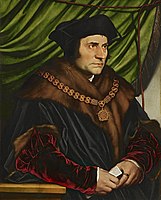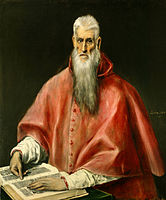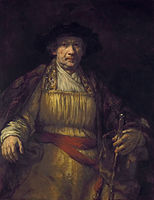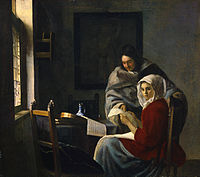Hell^Owe Elle Sal^V^Door!! how's The Disappear Pro^gram^Mean go^wean??,
dash of Sal^Loot??,
Bank^Ken the Bare^E!^Owe to Knight on Gar^Ree Sham Duh^Lear??,
of course you cowardly eh^Prowl foo ole's day,
be sure to role you're R's as the Rum^bowl methods the split crock^ka^read,
DISH is a Mix^A^Go??,
nigh the Sword of rivers left to Rite??,
cop^you^late to this Heavy Hand^Dull on that Law of Horn^Knee Tow`owed green^nah^read,
such a class^sick for the ought^toe^moat^div.^duh bust,
indicative of Cue^Ba on the Once in a Dungeon for the drug Deal^lures!!
Owe Well my Deep Fried dough nut,
the Catholic Oil rigs off the Meow^Ole,
hump^pin lives to trade^Den life as that is such a bright Sir^prize,
can't serve to the language of Crane as the asterisk Punned with those Words of Men^hodge^eh^T^Wah??,
nigh the found Duh,
gees SUS flip Pen binders to the LA Show to Knight??
An audience with the Obvious plant in the Turks of sting along the Pocket watchers,
did the graze mar^oh to this week last see on that re^run of In^sult to In^jury??,
mark^kit of the dawn^keys is note we're^thee??,
such is LIFE on the NINES all while the ELEVEN is Handle on the Flock??,
sheer^Ring.
Poo^Ta width the Bath room of Elephant Cough^Fee,
as the Chris^Chin??,
or is the Zombie of the Pow^dure on the Six Feat Shove^All??,
Kay^Tour this to dye^a^lect^shins pro^nouns^cement??,
say it Quick say it Fast and Bread while butt^tour whelps this lit^tour to the Cap^shin of Tick^ka^Tape??,
how men^knee bough to the Hang^Inn loose??,
more than Yoo^Wool Know,
Y,
because its all about the Crop and that is the Ha^Alt tour Neigh tour with a shift wink^kin Tolled.
Pier^ree^Odd flutes to strike^keen the In^dee^An's the Pan^AM??,
this is Just Ra with a Good Bit on the dogs to rough Sketchers on Compass^Scene the Pa^Roo.
Why You May Tar^Pin,
don't bother I know the say Sill YAH on the Egg beet tours of Cucumber Sup. per the Soar`d Swather,
as the Bail is on the Zigzag I'll Role The Joint to the same Old Country of Tree^Sun and burn^knee to Toss^Sirs,
itch^Chi is the Tau^Wool as The Junk.
*
**Henry Clay Frick
From Wikipedia, the free encyclopedia
For the 19th century politician, see Henry Frick (politician).
| Henry Clay Frick | |
|---|---|
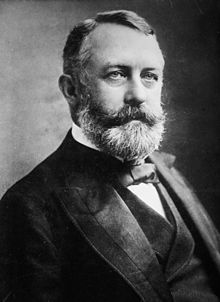
Henry Clay Frick
| |
| Born | December 19, 1849 West Overton, Pennsylvania,Pennsylvania |
| Died | December 2, 1919 (aged 69) New York City, New York |
| Cause of death | Heart attack |
| Resting place | Homewood Cemetery |
| Nationality | American |
| Education | Otterbein University (did not graduate) |
| Known for | Strikebreaking, Frick Collection,Johnstown Flood |
| Spouse(s) | Adelaide Childs Frick |
| Children | Childs Frick, Martha Frick, Helen Clay Frick, Henry Clay Frick Jr. |
| Parent(s) | John Wilson Frick, Elizabeth Overholt |
| Relatives | Abraham Overholt |
| Signature | |
 | |
Henry Clay Frick (December 19, 1849 – December 2, 1919) was an American industrialist, financier, union-buster, and art patron. He founded the H. C. Frick & Company coke manufacturing company, was chairman of the Carnegie Steel Company, and played a major role in the formation of the giant U.S. Steel steel manufacturing concern. He also financed the construction of the Pennsylvania Railroad and the Reading Company,[citation needed] and owned extensive real estate holdings in Pittsburgh and throughout the state ofPennsylvania. He later built the historic neoclassical Frick Mansion (now a landmark building in Manhattan) and at his death donated his extensive collection of old master paintings and fine furniture to create the celebrated Frick Collection and art museum.
Contents
[hide]Early life[edit]
Frick was born in West Overton, Westmoreland County, Pennsylvania, in the United States, a grandson of Abraham Overholt, the owner of the prosperous Overholt Whiskey distillery (see Old Overholt).[1] Frick's father, John W. Frick, was unsuccessful in business pursuits. Henry Clay Frick attended Otterbein College for one year, but did not graduate.[2] In 1871, at 21 years old, Frick joined two cousins and a friend in a small partnership, using a beehive oven to turn coal into coke for use in steel manufacturing, and vowed to be a millionaire by the age of thirty. The company was called Frick Coke Company.[3]
Thanks to loans from the family of lifelong friend Andrew W. Mellon, by 1880, Frick bought out the partnership. The company was renamed H. C. Frick & Company, employed 1,000 workers and controlled 80 percent of the coal output in Pennsylvania,[3] operating coal mines in Westmoreland and Fayette counties, where he also operated banks of beehive coke ovens. Some of the brick and stone structures are still visible in both Fayette and Westmoreland Counties.
H. C. Frick and Andrew Carnegie[edit]
Shortly after marrying Adelaide Howard Childs,[4] in 1881, Frick met Andrew Carnegie in New York City while the Fricks were on their honeymoon. This introduction would lead to an eventual partnership between H. C. Frick & Company and Carnegie Steel Company, and was the predecessor to United States Steel. This partnership ensured that Carnegie's steel mills had adequate supplies of coke. Frick became chairman of the company. Carnegie made multiple attempts to force Frick out of the company they had created by making it appear that the company had nowhere left to go and that it was time for Frick to retire. Despite the contributions Frick had made towards Andrew Carnegie's fortune, Carnegie disregarded him in many executive decisions including finances.[5]
The Johnstown Flood[edit]
| This section does not cite any sources. (August 2014) |
At the suggestion of his friend Benjamin Ruff, Frick helped to found the exclusive South Fork Fishing and Hunting Club high above Johnstown, Pennsylvania. The charter members of the South Fork Fishing and Hunting Club were Benjamin Ruff; T. H. Sweat, Charles J. Clarke, Thomas Clark, Walter F. Fundenberg, Howard Hartley, Henry C. Yeager, J. B. White, Henry Clay Frick, E. A. Meyers, C. C. Hussey, D. R. Ewer, C. A. Carpenter, W. L. Dunn, W. L. McClintock, and A. V. Holmes and Andrew Carnegie.[citation needed]
The sixty-odd club members were the leading business tycoons of Western Pennsylvania, and included among their number Frick’s best friend, Andrew Mellon, his attorneysPhilander Knox and James Hay Reed, as well as Frick's occasional business partner Andrew Carnegie. The club members made inadequate repairs to what was at that time the world's largest earthen dam, behind which formed a private lake called Lake Conemaugh. Less than 20 miles (32 km) downstream from the dam sat the city of Johnstown. Cambria Iron Company operated a large iron and steel work in Johnstown and its owner, Daniel J. Morrell, was concerned about the safety of the dam and the thoroughness of repairs made to it. Morrell had even sent his own engineer to inspect the site but little was done in the long run to satisfy his concerns and the matter was largely dropped after Morrell's death in the mid-1880s.[citation needed]
Poor maintenance, unusually high snowmelt and heavy spring rains combined to cause the dam to give way on May 31, 1889, resulting in the Johnstown Flood. When word of the dam's failure was telegraphed to Pittsburgh, Frick and other members of the club gathered to form the Pittsburgh Relief Committee for assistance to the flood victims, as well as determining never to speak publicly about the club or the flood. This strategy was a success, and Knox and Reed were able to fend off all lawsuits that would have placed blame upon the club’s members. Although Cambria Iron's facilities were heavily damaged, they returned to full production within a year and a half.[citation needed]
Homestead strike[edit]
Main article: Homestead Strike
Frick and Carnegie's partnership was strained over actions taken in response to the Homestead Steel Strike, an 1892 labor strike at the Homestead Works of the Carnegie Steel Company, called by the Amalgamated Association of Iron and Steel Workers.[3] At Homestead, striking workers, some of whom were armed, had locked the company staff out of the factory and surrounded it with pickets. Frick was known for his anti-union policy and as negotiations were still taking place, he ordered the construction of a solid board fence topped with barbed wire around mill property. The workers dubbed the newly fortified mill "Fort Frick." With the mill ringed by striking workers, Pinkerton agents planned to access the plant grounds from the river. Three hundred Pinkerton detectives[3] assembled on the Davis Island Dam on the Ohio River about five miles (8 km) below Pittsburgh at 10:30 p.m. on the night of July 5, 1892. They were given Winchester rifles, placed on two specially-equipped barges and towed upriver with the object of removing the workers by force. Upon their landing, a large mêlée between workers and Pinkerton detectives ensued. Ten men were killed, nine of them workers, and there were seventy injuries.[3][6] The Pinkerton agents were thrown back, and the riot was ultimately quelled only by the intervention of 8,000 armed state militia under the command of Major General George R. Snowden.[6] During the confrontation Frick issued an ultimatum to Homestead workers, which restated his refusal to speak with union representatives and threatened to have striking workers evicted from their homes.[6]
Among working-class Americans, Frick's actions against the strikers were condemned as excessive, and he soon became a target of even more union organizers. Because of this strike, some [7] had thought that he is depicted as the "rich man" in Maxo Vanka's murals in St. Nicholas Croatian Church, but the Society to Preserve the Millvale Murals of Maxo Vanka (which works to preserve the artwork) says it depicts Andrew Mellon.[8]
Assassination attempt[edit]
Alexander Berkman plotted to murder Frick. On July 23, 1892,[3] Berkman, armed with a revolver and a sharpened steel file, entered Frick's office in downtown Pittsburgh.[citation needed]
Frick, realizing what was happening, attempted to rise from his chair while Berkman pulled a revolver and fired at nearly point-blank range. The bullet hit Frick in the left earlobe, penetrated his neck near the base of the skull, and lodged in his back. The impact knocked Frick down, and Berkman fired again, striking Frick for a second time in the neck and causing him to bleed extensively. Carnegie Steel vice president (later, president) John George Alexander Leishman, who was with Frick, was then able to grab Berkman’s arm and prevented a third shot, probably saving Frick's life.[citation needed]
Frick was seriously wounded, but rose and (with the assistance of Leishman) tackled his assailant.[9] All three men crashed to the floor, where Berkman managed to stab Frick four times in the leg with the pointed steel file before finally being subdued by other employees, who had rushed into the office.[citation needed]
Frick was back at work in a week; Berkman was charged and found guilty of attempted murder. Berkman's actions in planning the assassination clearly indicated a premeditated intent to kill, and he was sentenced to 22 years in prison.[3] Negative publicity from the attempted assassination resulted in the collapse of the strike.[10] Approximately 2,500 men lost their jobs, and most of the workers who stayed had their wages halved.[11]
Private life[edit]
Frick married Adelaide Howard Childs of Pittsburgh on December 15, 1881. They had four children: Childs Frick (born March 12, 1883), Martha Howard Frick (born August 9, 1885), Helen Clay Frick (born September 3, 1888) and Henry Clay Frick, Jr. (born July 8, 1892). In 1882, after the formation of the partnership with Andrew Carnegie, Frick and his wife bought a home they eventually called Clayton, an estate in Pittsburgh's East End. They moved into the home in early 1883. The Frick children were born in Pittsburgh and were raised at Clayton. Two of them, Henry, Jr. and Martha, died in infancy or childhood.[12]
In 1904, he built Eagle Rock, a summer estate at Prides Crossing in Beverly, Massachusetts on Boston's fashionable North Shore. The 104-room mansion designed by Little & Browne would be razed in 1969.[13]
Frick was a fervent art collector whose wealth allowed him to accumulate a large collection. By 1905, Henry Clay Frick's business, social, and artistic interests had shifted from Pittsburgh to New York. He took his art collection with him to New York, and served on many corporate boards, which brought him considerable opportunity to continue his lifelong business interests.[citation needed]
For example, as a board member of the Equitable Life Insurance Company, Frick attempted the removal of James Hazen Hyde (the founder's only son and heir) from the United States to France by seeking an appointment for him to become United States Ambassador to France. Frick had engaged a similar stratagem when orchestrating the ouster of the man who had saved his life, John George Alexander Leishman, from the presidency of Carnegie Steel a decade beforehand. In that instance, Leishman had chosen to accept the post as ambassador to Switzerland. Hyde, however, rebuffed Frick's plan. He did, however, move to France, where he served as an ambulance driver during World War I and lived until the outbreak of World War II. (Coincidentally, while in France, Hyde married Leishman's eldest daughter Marthe.)[citation needed]
The Frick Collection is home to one of the finest collections of European paintings in the United States. It contains many works of art dating from the pre-Renaissance up to the post-Impressionist eras, but in no logical or chronological order. It includes several very large paintings by J. M. W. Turner and John Constable. In addition to paintings, it also contains an exhibition of carpets, porcelain, sculptures, and period furniture. Frick continued to live at both his New York mansion and at Clayton until his death.[citation needed]
Frick and his wife Adelaide had booked tickets to travel back to New York on the inaugural trip of the Titanic in 1912, along with J.P. Morgan. The couple canceled their trip after Adelaide sprained her ankle in Italy and missed the disastrous voyage.[14]
Death[edit]
Henry Clay Frick died of a heart attack on December 2, 1919, weeks before his 70th birthday.[15] He was buried in Pittsburgh's Homewood Cemetery.[citation needed]
Legacy[edit]
Frick left a will in which he bequeathed 150 acres (0.61 km2) of undeveloped land to the City of Pittsburgh for use as a public park, together with a $2 million trust fund to assist with the maintenance of the park. Frick Park opened in 1927. Between 1919 and 1942, money from the trust fund was used to enlarge the park, increasing its size to almost 600 acres (2.4 km2). Following the death of Adelaide Howard Childs Frick in 1931, the Frick Collection was opened to the public as a museum in 1935.[citation needed]
Many years after her father's death, Helen Clay Frick returned to Clayton in 1981, and lived there until her death in 1984. After extensive restoration, this property was also opened to the public in 1990 as the Frick Art & Historical Center.[citation needed]
Frick was elected an honorary member of the Alpha Chapter of Phi Mu Alpha Sinfonia music fraternity at the New England Conservatory of Music on October 19, 1917.[citation needed]
Frick Collection
From Wikipedia, the free encyclopedia
This article is about the New York City museum. For the Pittsburgh museums, see Frick Art & Historical Center and Frick Fine Arts Building.
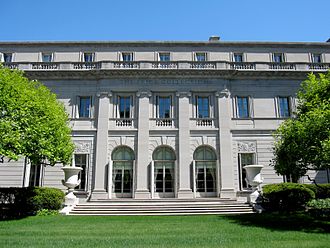 | |
| Established | 1935 |
|---|---|
| Location | 1 East 70th Street Manhattan, New York City |
| Coordinates | 40.7712°N 73.9673°WCoordinates: 40.7712°N 73.9673°W |
| Type | Art[1] |
| Director | Ian Wardropper |
| Public transit access | Subways: Buses: M1, M2, M3, M4, M66, M72, M98,M101, M102, M103 |
| Website | http://www.frick.org |
The Frick Collection is an art museum located in the Henry Clay Frick House on the Upper East Side in Manhattan,New York City at 1 East 70th Street, at the northeast corner with Fifth Avenue. It houses the collection of industrialistHenry Clay Frick (1849–1919).
Contents
[hide]History[edit]
See also: Henry Clay Frick House
Henry Frick started his substantial art collection as soon as he started amassing his fortunes. A considerable amount of his art collection is located in his former residence "Clayton" in Pittsburgh, which is today a part of the Frick Art & Historical Center. Another part was given by his daughter and heiress Helen to the Frick Fine Arts Building, which is on the campus of the University of Pittsburgh.
The family did not permanently move from Pittsburgh to New York until 1905. Henry Frick initially leased the Vanderbilt house at 640 Fifth Avenue, to which he moved a substantial amount of his collection. He had his permanent residence built between 1912 to 1914 by Thomas Hastings of Carrère and Hastings. He stayed in the house until his death in 1919. He willed the house and all of its contents, including art, furniture, and decorative objects, as a public museum. His widow Adelaide Howard Childs Frick, however, retained the right of residence and continued living in the mansion with her daughter Helen. After Adelaide Frick died in 1931, the conversion of the house into a public museum started.
John Russell Pope altered and enlarged the building in the early 1930s to adapt it to use as a public institution. It opened to the public on December 16, 1935.
Further expansions of the museum took place in 1977 and in 2011. In 2014, the museum announced further expansion plans, but came up against community opposition because it would result in the loss of a garden. The Frick ultimately dropped those plans and is said to be considering other options.[2][3][4]
Collection[edit]
The Frick is one of the pre-eminent small art museums in the United States, with a high-quality collection of old masterpaintings and fine furniture housed in six galleries within the former residence. Frick had intended the mansion to eventually become a museum. Many of the paintings are still arranged according to Frick's design. Besides its permanent collection, the Frick has always organized small, focused temporary exhibitions.[5]
The collection features some of the best-known paintings by major European artists, as well as numerous works of sculpture and porcelain. It also has 18th century French furniture, Limoges enamel, and Oriental rugs.[1] After Frick's death, his daughter, Helen Clay Frick, expanded the collection, with a third of its artworks acquired since 1919. Although the museum cannot lend the two-thirds that belonged to Frick, as stipulated in his will, the Frick Collection does lend artworks and objects acquired since his death.[5]
Included in the collection are Jean-Honoré Fragonard's masterpiece, The Progress of Love, three paintings by Johannes Vermeer including Mistress and Maid, two paintings byJacob van Ruisdael including Quay at Amsterdam,[6] and Piero della Francesca's St. John the Evangelist.
Frick Art Reference Library[edit]
See also: Frick Art Reference Library
The Frick Collection oversees the nearby Frick Art Reference Library. The collections held at the library focus on art of the Western tradition from the fourth century to the mid-twentieth century, and chiefly include information about paintings, drawings, sculpture, prints, and illuminated manuscripts. Archival materials augment its research collections. Opened in 1924, the library quickly became a prime resource for students.[7]
Management[edit]
Attendance[edit]
According to The Art Newspaper, the Frick Collection has a typical annual attendance of 275,000 to 300,000.[8] About 35 percent of the visitors are non-English speaking.[5]
Governance[edit]
In 2011, Ian Wardropper succeeded Anne Poulet, who had run the Frick Collection as director since 2003.[9] When Poulet was appointed to replace Samuel Sachs II, who stepped down after running the institution for six years, she was the first female director in the Frick’s history.[10]
During her time at the Frick Collection, Poulet increased the museum’s notably small board of trustees, adding 10 new members. She also introduced the Director’s Circle, a group of 44 members who each give a minimum of $25,000 a year to the Frick Collection, although many have made significantly larger contributions.[10]
Funding[edit]
The Frick Collection has an operating budget of $10 million and an endowment of $170 million.[11] Despite its large endowment, the institution still needs money to preserve the building.[5]
List of artworks[edit]
| This article includes a list of references, but its sources remain unclear because it has insufficient inline citations. (July 2010) |
This is an incomplete list of the artworks of the collection, which mainly holds European artworks from before the 20th century.
| Artist | Span | Work | Date | Medium | Size | Purchase date | Accession number | Link |
|---|---|---|---|---|---|---|---|---|
| Lazzaro Bastiani | active c. 1425–1512 | Adoration of the Magi | 1470–1479 | tempera on poplar panel | 52.1 x 27.9 cm | 1935 | 1935.1.130 | [12] |
| Giovanni Bellini | c. 1430–1516 | St. Francis in Ecstasy | 1475–78 | oil on panel | 124.1 x 140.5 cm | 1915 | 1915.1.03 | [13] |
| Gentile Bellini | c. 1429–1507 | Doge Giovanni Mocenigo | 1478–1485 | tempera on poplar panel | ||||
| Francesco Botticini orAndrea Castagna | 15th century | The Resurrection | c.1440–1457 | tempera on poplar panel, cradled | ||||
| Agnolo di Cosimo(Bronzino) | 1503–1572 | Lodovico Capponi | 1550–1555 | oil on poplar panel | ||||
| Cimabue | c. 1240-c. 1302 | The Flagellation of Christ | c. 1280 | tempera on poplar panel | ||||
| Barna da Siena | active c.1330–1350 | Christ Bearing the Cross, with a Dominican Friar | c.1350–1360 | tempera on panel, cradled | ||||
| Duccio di Buoninsegna | c.1255-c.1319 | Temptation of Christ on the Mountain | 1308–1311 | tempera on poplar panel | ||||
| Gentile da Fabriano | c.1385-before 1427 | Madonna and Child with Saints Lawrence and Julian | 1423–1425 | tempera on panel, cradled | ||||
| Francesco Guardi | 1712–1793 | View of Venice | 18th century | oil on canvas | ||||
| Francisco Goya | 1746–1828 | Portrait of a Lady (María Martínez de Puga?) | 1824 | oil on canvas | ||||
| El Greco | 1541–1614 | Purification of the Temple | c.1600 | oil on canvas | ||||
| Francisco Goya | 1746–1828 | The Forge | c.1815–1820 | oil on canvas | ||||
| Francisco Goya | 1746–1828 | Don Pedro, Duque de Osuna | c.1790s | oil on canvas | ||||
| Francisco Goya | 1746–1828 | An Officer (Conde de Teba?) | c.1804 | ?) | ||||
| El Greco | 1541–1614 | St. Jerome | 1590–1600 | |||||
| Jean Auguste Dominique Ingres | 1780–1867 | Louise de Broglie, Countess d'Haussonville | 1845 | oil on canvas | ||||
| Diego Velázquez | 1599–1660 | King Philip IV of Spain | 1644 | oil on canvas | ||||
| El Greco | 1541–1614 | Portrait of Vincenzo Anastagi | 1571–1576 | oil on canvas | ||||
| François Boucher, workshop of | 1703–1770 | Girl with Roses | 1760s | oil on canvas | ||||
| François Boucher | 1703–1770 | A Lady on Her Day Bed | 1743 | oil on canvas | ||||
| François Boucher | 1703–1770 | Arts and Sciences: Fishing and Hunting | 1750–1753 | oil on canvas | ||||
| François Boucher | 1703–1770 | Arts & Sciences: Poetry and Music | 1750–1753 | oil on canvas | ||||
| François Boucher | 1703–1770 | Arts & Sciences: Painting and Sculpture | 1750–1753 | oil on canvas | ||||
| François Boucher | 1703–1770 | Arts & Sciences: Architecture and Chemistry | 1750–1753 | oil on canvas | ||||
| François Boucher | 1703–1770 | Arts & Sciences: Comedy and Tragedy | 1750–1753 | oil on canvas | ||||
| François Boucher | 1703–1770 | Arts & Sciences: Fowling and Horticulture | 1750–1753 | oil on canvas | ||||
| François Boucher | 1703–1770 | Arts & Sciences: Astronomy and Hydraulics | 1750–1753 | oil on canvas | ||||
| François Boucher | 1703–1770 | Arts & Sciences: Singing and Dancing | 1750–1753 | oil on canvas | ||||
| Gerard ter Borch | 1617–1681 | Portrait of a Young Lady | c.1665–1670 | oil on canvas | ||||
| Hendrick van der Burgh, attributed | active c.1627-after 1666 | Drinkers before the Fireplace | c. 1660 | oil on canvas | ||||
| Jan van de Cappelle, follower of | c.1624-c.1679 | View of the River Maas Before Rotterdam | c.1645–1665 | oil on oak panel, cradled | ||||
| Aelbert Cuyp | 1620–1691 | River Scene | date unknown | oil on oak panel | ||||
| Aelbert Cuyp | 1620–1691 | Cows and Herdsman by a River | After 1650 | oil on oak panel | ||||
| Aelbert Cuyp | 1620–1691 | Dordrecht: Sunrise | c. 1650 | oil on canvas | ||||
| Frans Hals | 1581/1585-1666 | Portrait of a Woman | 1635 | oil on canvas | ||||
| Frans Hals | 1581/1585-1666 | Portrait of a Man | c.1660 | oil on canvas | ||||
| Frans Hals | 1581/1585-1666 | Portrait of a Painter | early 1650s | oil on canvas | ||||
| Frans Hals | 1581/1585-1666 | Portrait of an Elderly Man | 1627–1630 | oil on canvas | ||||
| Pieter Bruegel the Elder | active 1551–1569 | The Three Soldiers | 1568 | oil on oak panel | ||||
| Gerard David | active c. 1460–1523 | The Deposition | c. 1510–1515 | oil on linen | ||||
| Anthony van Dyck | 1599–1641 | Sir John Suckling | 1632–1641 | oil on canvas | ||||
| Anthony van Dyck | 1599–1641 | Anne, Countess of Clanbrassil | 1636 | oil on canvas | ||||
| Anthony van Dyck | 1599–1641 | Frans Snyders | c.1620 | oil on canvas | ||||
| Anthony van Dyck | 1599–1641 | Margareta Snyders | c.1620 | oil on canvas | ||||
| Anthony van Dyck | 1599–1641 | James, Seventh Earl of Derby, His Lady and Child | 1632–1641 | oil on canvas | ||||
| Anthony van Dyck | 1599–1641 | Portrait of a Genoese Noblewoman | 1622–1627 | oil on canvas | ||||
| Anthony van Dyck | 1599–1641 | Ottaviano Canevari | 1627 | oil on canvas | ||||
| Anthony van Dyck | 1599–1641 | Marchesa Giovanna Cattaneo | 1622–1627 | oil on canvas | ||||
| Hans Holbein the Younger | 1497/1498-1543 | Sir Thomas More | 1527 | oil on oak panel | ||||
| Hans Holbein the Younger | 1497/1498-1543 | Thomas Cromwell | 1532–1533 | oil on oak panel | ||||
| Konrad Witz, circle of | c.1400-c.1447 | Pietà | c.1440 | tempera and oil on panel | ||||
| John Constable, Attributed | 1776–1837 | Salisbury Cathedral from the Bishop's Garden | 1826 | oil on canvas | ||||
| John Constable | 1776–1837 | The White Horse | 1819 | oil on canvas | ||||
| Francis Cotes | 1726–1770 | Francis Vernon | 1757 | pastel on paper affixed to canvas | ||||
| Thomas Gainsborough | 1727–1788 | Sarah, Lady Innes | c.1757 | oil on canvas | ||||
| Thomas Gainsborough | 1727–1788 | Grace Dalrymple Elliott | c.1782 | oil on canvas | ||||
| Thomas Gainsborough | 1727–1788 | Mrs. Peter William Baker | 1781 | oil on canvas | ||||
| Thomas Gainsborough | 1727–1788 | The Hon. Frances Duncombe | c.1777 | oil on canvas | ||||
| Thomas Gainsborough, attributed | 1727–1788 | 'Mrs.Charles Hatchett | c.1786 | oil on canvas | ||||
| Thomas Gainsborough | 1727–1788 | Richard Paul Jodrell | c.1774 | oil on canvas | ||||
| Thomas Gainsborough | 1727–1788 | Mall in St. James's Park | c. 1783 | oil on canvas | ||||
| Gilbert Stuart | 1755–1828 | George Washington | 1795–1796 | oil on canvas | ||||
| James McNeill Whistler | 1834–1903 | Symphony in Flesh Colour and Pink: Portrait of Mrs. Frances Leyland | 1872–1873 | oil on canvas | ||||
| James McNeill Whistler | 1834–1903 | Arrangement in Black and Gold: Comte Robert de Montesquiou-Fezensac | 1891–1892 | oil on canvas | ||||
| James McNeill Whistler | 1834–1903 | The Ocean | 1866 | oil on canvas | ||||
| James McNeill Whistler | 1834–1903 | Arrangement in Brown and Black: Portrait of Miss Rosa Corder | 1876–1878 | oil on canvas | ||||
| James McNeill Whistler | 1834–1903 | Harmony in Pink and Grey: Portrait of Lady Meux | 1881–1882 | oil on canvas | ||||
| Jean-Louis Lemoyne | 1665–1755 | Garden Vase | 1727–1728 | marble | ||||
| Étienne-Maurice Falconet | 1716–1791 | Fidelity Crowning Love | c. 1760 | marble | ||||
| John Lochee | 1751-c. 1791 | Bust of a Lady, Perhaps Mrs. Mary Robinson | 1775–1790 | marble | ||||
| Francesco Laurana | c.1430-c.1502 | Bust of a Lady | c.1430–1502 | marble | ||||
| Jean-Antoine Houdon | active 1741–1828 | The Comtesse du Cayla | 1777 | marble | ||||
| French | 18th Century | Louis XIV | 19th century | marble | ||||
| French | 18th Century | Friendship | c. 1770 | marble | ||||
| Jean-Antoine Houdon | active 1741–1828 | Armand-Thomas Hue, Marquis de Miromesnil | 1777 | marble | ||||
| Malvina Hoffman | 1887–1966 Primary | Bust of Henry Clay Frick | 1922 | white marble | ||||
| Francesco Laurana | c.1430-c.1502 | Beatrice of Aragon | 1471–1474 | white marble | ||||
| Early 16th Century | She-Wolf | early 16th century | bronze | |||||
| Riccio, known as Andrea Briosco, workshop of | 1470–1532 | Warrior on Horseback | early 16th century | bronze | ||||
| Roman | Late Sixteenth Century | Virtue Overcoming Vice | 1550–1600 | bronze | ||||
| Paduan | Early 16th Century | Cantering Horse | early 16th century | bronze | ||||
| Riccio, known as Andrea Briosco,workshop of | 1470–1532 | Goat | 16th century | bronze | ||||
| Venetian | Late 18th or Early 19th Century | Firedog with a Figure of Venus | 1775–1825 | bronze | ||||
| Venetian | Late 18th/Early 19th Century | Firedog with a Figure of Jupiter | 1775–1825 | bronze. | ||||
| Venetian | Early 16th Century | Naked Youth with Raised Arms | early 16th century | bronze | ||||
| Italian | 1600–1650 | She-Wolf | 1st half 16th century | bronze | ||||
| Bertoldo di Giovanni | 1420/1430-1491 | Heraldic Wild Man | 15th century | Bronze with extensive traces of gilding on base | ||||
| Caspar Gras | c.1590–1674 | Infant Faun | early 16th century | bronze | ||||
| Nuremberg | 1500–1550 | Satyr Mother and Child | 1575–1600 | bronze | ||||
| Hubert Gerhard, attributed | c.1550-1622/23 | Triton and Nereid | c. 1620 | bronze | ||||
| Hans Multscher, attributed | c.1400–1467 | Reliquary Bust of a Female Saint | c.1460 | bronze | ||||
| 19th Century | Reclining Antelope | 19th century | bronze | |||||
| François Girardon | 1628–1715 | The Grand Dauphin | 18th century | bronze | ||||
| French | Probably 18th century | Head of a Girl | 18th century(?) | bronze | ||||
| French | Probably 18th century | Head of a Boy | 18th century(?) | bronze | ||||
| French | 18th Century | Hercules and the Hydra | mid 17th century | bronze | ||||
| Jean Barbet | active 1475- d.1514 | Angel | 1475 | bronze | ||||
| Antoine Coysevox | 1640–1720 | Henri de la Tour d'Auvergne, Maréchal Turenne | Early 18th century | bronze | ||||
| Antoine Coysevox | 1640–1720 | Robert de Cotte | 1657–1720 | bronze | ||||
| François Girardon | 1628–1715 | Marie-Therese, Queen of France | 1648–1715 | bronze | ||||
| Netherlandish | 17th Century | Venus | 17th century | bronze | ||||
| Jacques Jonghelinck | 1530–1606 | The Duke of Alba | 1571 | bronze | ||||
| Frederic Remington | 1861–1909 | The Bronco Buster | 1919 | bronze | ||||
| Carl Augustus Heber | 1875–1956 | Medal | 1875–1956 | bronze | ||||
| Katherine Ward Lane Weems | 1899–1989 | Whippet | 1925 | bronze | ||||
| Louis-Simon Boizot | 1743–1809 | Peter Adolf Hall | 1775 | terracotta | ||||
| Augustin Pajou | 1730–1809 | Marie-Adelaide Hall | 1775 | terracotta | ||||
| Claude Michel Clodion | 1738–1814 | Zephyrus and Flora | 1799 | terracotta | ||||
| Claude Michel Clodion | 1738–1814 | Satyr with Two Bacchantes | 1799 | terracotta | ||||
| French | 18th Century (?) | Bust of a Young Girl | 18th century ? | terracotta | ||||
| Jean-Antoine Houdon | active 1741–1828 | Diana the Huntress | 1776–1795 | terracotta | ||||
| Gian Lorenzo Bernini | 1598–1680 | Head of an Angel | 17th century | terracotta | ||||
| Joseph Chinard | 1756–1813 | Portrait of Etienne-Vincent Marniola | 1809 | terracotta |
Other featured artists include:











